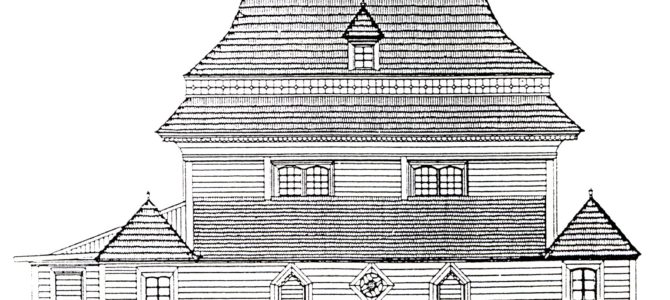
The relicts of the Jewish cultural landscape created over more than 600 years in cities, towns and villages throughout Lithuania can be placed in four categories: mass murder sites; cemeteries; synagogues and other heritage buildings; monuments and other commemorative markers. Martynas Užpelkis, Lithuanian Jewish Community heritage protection expert delivering a lecture at an event dedicated to the European Day of Jewish Culture, said: “The Lithuanian Jewish Community, almost exterminated during the Holocaust, is not able to maintain and protect heritage sites throughout Lithuania alone today. The role of the Lithuanian state and municipal institutions, NGOs and citizens is crucial. Many challenges are arising, but great results have been achieved in cooperation with the Cultural Heritage Department and the municipalities.”
To what use should the synagogue buildings be put?
About 80 synagogues survive in Lithuania today, and 43 of them are listed on the register of cultural treasures. There are only two working synagogues and all other buildings are being put to other uses or are not being used at all. The LJC owns 13 synagogues and synagogue complexes. Most of the buildings are not in use and are in serious disrepair.
“To what use should the synagogue buildings in the towns be put when there is not a single Jewish community member there? How do we convince the local communities to take over those buildings, fix them up and use them for their own purposes?” Užpelkis proposed as discussion topics, and noted that three synagogues–in Alytus, Žiežmariai and Kalvarija–are undergoing renovation currently under a 2016 heritage protection program, and another three–the Choral Synagogue in Vilnius and the synagogues in Žemaičių Naumiestis and Švėkšna–are being inspected and plans for renovation next year are currently being drafted.
Lithuania’s Wooden Synagogues: Exceptional and under Threat
Lithuania counts more than 20 wooden synagogues, more than all such in other countries combined. The Pakruojas synagogue, built in 1801, an example of early classicism, is still standing today. It is the oldest surviving wooden synagogue in Lithuania preserving its authentic elements and form. The summer synagogue (it’s unheated) has a very decorative aron khodesh and the bima is arranged as an open, eight-sided octagonal pavilion. The walls and vaults of the ceiling are decorated with exotic and local floral and faunal motifs.
From the latter 18th century to World War II synagogues were an essential and abundant part of the architecture of Lithuanian cities and towns testifying to the rich Litvak culture and ethnic diversity of Lithuanian architecture. Marija Rupeikienė* writes the wooden synagogues built at the intersection of the baroque and classical epochs are exceptional buildings which can only be found in the Diaspora. Wood is employed very creatively in their architecture, with an original harmonization of ethnic and architecture style features, modified forms of different kinds of wooden homes and other sacred buildings or portions of them applied. Artistic placement of boards on walls usually enlivened the façade. The synagogues of Valkininkai, Jurbarkas and Vilkaviškis are quite impressive, with towers on the outside corners, open arcades and balconies.
The period of construction of Lithuania’s wooden synagogues lasts from the latter 17th century to World War II. Rupeikienė distinguishes two main periods: 1) from the second half of the 17th century until 1830, when churches and traditional Lithuanian farmhouses exerted great influence upon synagogue forms; and 2) from 1830 to 1940, when wooden synagogues were constructed in a way architecturally similar to brick and mortar synagogues. Jewish houses of prayer in Lithuania were categorized by season and named after different religious associations, guilds and workshops; often the buildings were named after the street or neighborhood where they were located, or after the builder or owner.
According to halacha, or Jewish religious law, there is only one main requirement for synagogue design: it must have 12 windows symbolizing the 12 tribes of Israel. Often exterior elements include decorative Ten Commandment tablets or the Star of David. An integrated system of different biblical signs and symbols is used for the interior. The aron khodesh, used to make plain where the Torah is kept, has characteristic floral and faunal designs, representations of the tablets of the Law, a crown and a figurative hand of priest (the kohen) extended in blessing. In the 18th century the aron khodesh was especially decorated, with columns and carvings in bright colors, and the octagonal bima featured all sorts of coverings bringing to mind the image of a crown. Sometimes paintings decorated the walls and ceilings. Besides traditional local plants and animals, sometimes the symbols of the zodiac were employed, as were animals and mythical entities from the Torah (the lion, Leviathan), images of the Temple and the city of Jerusalem, ritual regalia, passages from the Torah, musical instruments (most frequently King David’s lyre, the biblical kinnor) and different geometrical designs.
Prepared by Radvilė Rimgailė-Voicik
* Monograph by Dr. Marija Rupeikienė “Nykstantis kultūros paveldas: Lietuvos sinagogų architektūra” [Disappearing Cultural Heritage: The Architecture of Lithuanian Synagogues], (Vilnius, 2003).
Article prepared to mark European Day of Jewish Culture 2016. The theme of European Day of Jewish Culture was Jewish languages. Events in Lithuania sponsored by the Cultural Heritage Department.

